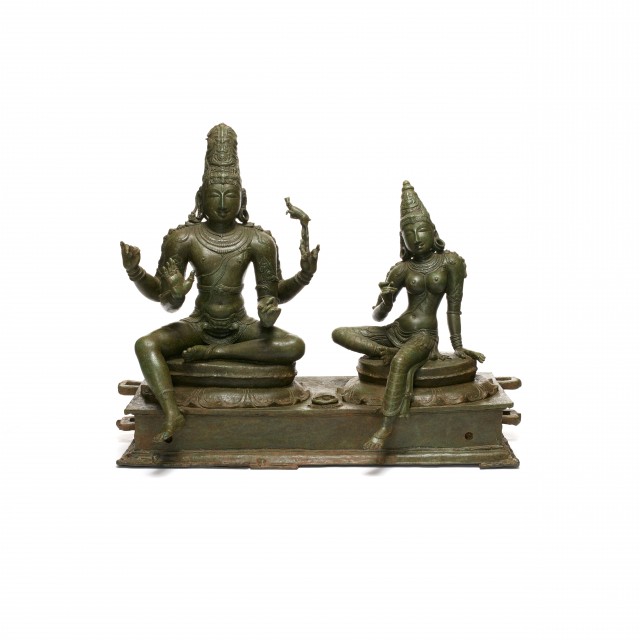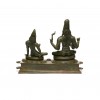
Shiva and Parvati (Somaskanda)

Photography by Synthescape, Digital image © Asia Society

Photography by Synthescape, Digital image © Asia Society
Shiva and Parvati (Somaskanda)
12th century
India, Tamil Nadu
Copper alloy
H. 19 x W. 23 3/4 x D. 11 in. (48.3 x 60.3 x 27.9 cm)
Asia Society, New York: Mr. and Mrs. John D. Rockefeller 3rd Collection, 1979.28
Provenance
John D. Rockefeller 3rd, New York, NY; acquired from J. J. Klejman, New York, NY, 1969.
The Asia Society, New York, NY, bequest of John D. Rockefeller 3rd, New York, NY, 1979.
Licensing inquiries
Representations of Shiva and his family are among the most common images associated with his worship. In this 12th-century example, Shiva is seated side by side with his wife Parvati. The space between Shiva and Parvati would once have been filled by a small image of their son Skanda, who is worshipped as both a divine child and the god of war. These small sculptures of Skanda are easy to remove and are often missing from images of this type. Shiva can be identified by the crescent moon and skull in his headdress and by the antelope he holds in his upper left hand, which refers to his role as Lord of the Animals. The u-shaped attachments at either end of the pedestal indicate that a halo once arched over this sculpture. The deities are seated on oval-shaped forms which rest on lotus bases, set onto an oblong platform. The figures are richly adorned with jewels in high relief.


